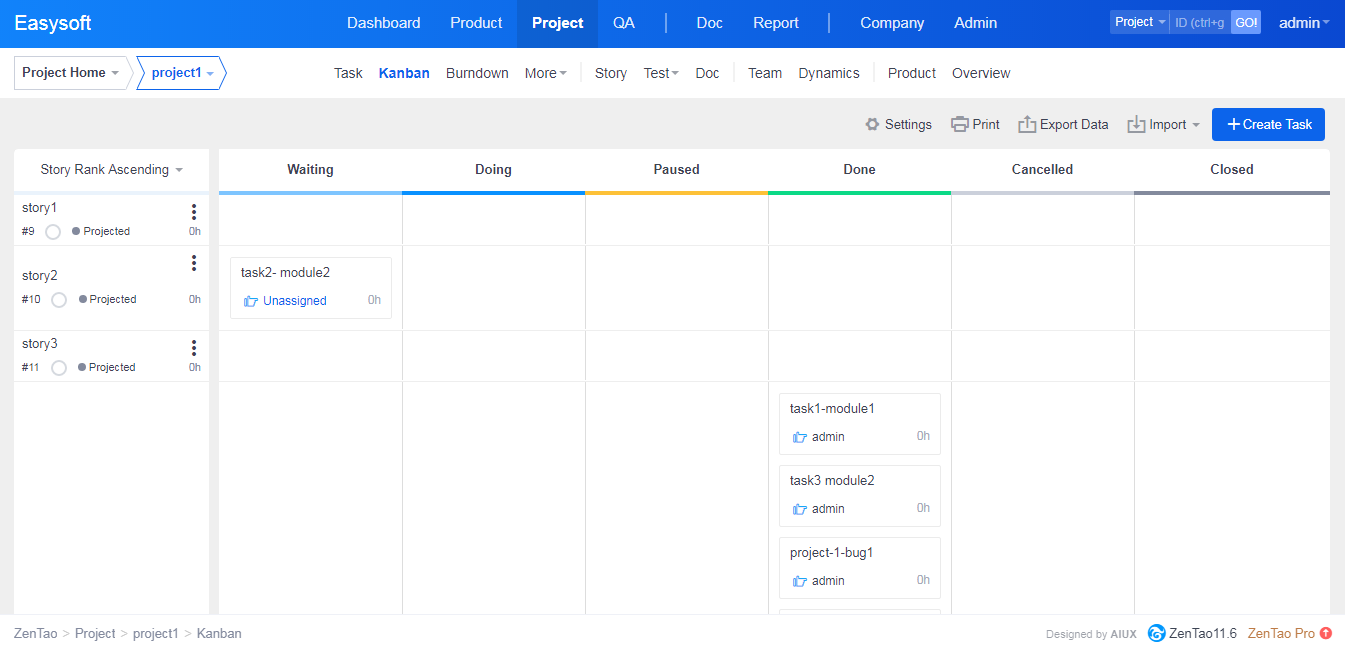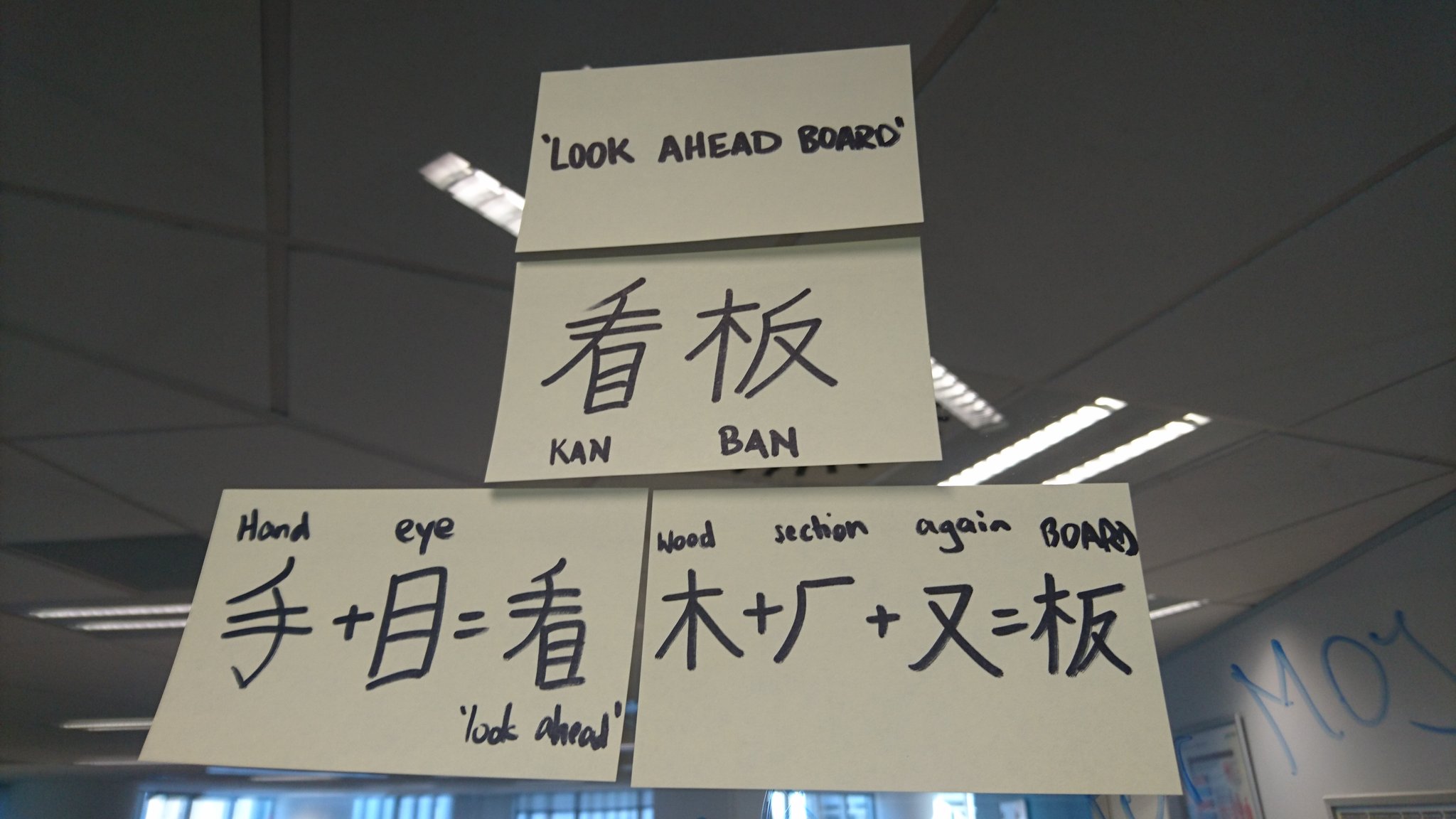FAQ | How to update Kanban
Original
-
 ZenTao Official
ZenTao Official -
 2021-04-13 13:51:32
2021-04-13 13:51:32 -
 3122
3122
FAQ | How to update Kanban in ZenTao

What is Kanban
Kanban is a process management system for identifying, handling, and optimizing information. Its goal is to help you envision your work, improve productivity, and constantly optimize. Kanban translates as billboard or signboard in Japanese. It originated in manufacturing and was later asserted by Agile development teams.
Kanban began as a scheduling method for lean manufacturing, derived from the Toyota Production System (TPS). Toyota added “just in time” processing to its production in the late 1940s. The method resembles a pull mechanism. This means that rather than the traditional drive method of producing products and pushing them to the market, manufacturing is dependent on consumer demand.
Set up the most simple Kanban board with three basic columns – "Requested," "In Progress," and "Finished" to begin developing your Kanban system. When properly designed, maintained, and operated, it acts as a real-time knowledge repository, exposing bottlenecks in the system and everything else that can disrupt smooth working processes.
4 Kanban Principles
1-Start With What You Do Now
Kanban's adaptability helps it to be overlaid over current workflows, procedures, and procedures without affecting what is already working well; naturally, it can identify problems that need to be resolved and assist in assessing and planning improvements such that their execution is as non-disruptive as possible.
2-Agree to Pursue Incremental, Evolutionary Change
The Kanban technique is intended to encounter as little opposition as possible. It supports small progressive and evolutionary improvements within the existing method on a continuous basis. In general, large-scale reforms are avoided because they are often met with opposition owing to anxiety or confusion.
3-Respect the Current Process, Roles & Responsibilities
Kanban understands the importance of current structures, duties, obligations, and titles and believes they should be preserved. The Kanban approach does not forbid reform, but it also does not recommend it as a panacea. It is intended to foster and inspire small, rational improvements without instilling fear of change.
4-Encourage Acts of Leadership at All Levels
This is the most recent Kanban definition. It serves as a reminder that leadership is derived from people's daily actions on the front lines of their teams. To achieve peak efficiency on a team/department/company level, everyone must cultivate a quality improvement mentality (Kaizen). This cannot be a management-level job.

6 Kanban Cadences
Kanban does not have a predefined software development process. The team should add Kanban elements to the current workflow to reveal waste, uneven work, team overload, bottlenecks, bottlenecks, and other problems in the system, as well as the possibility of delay. Meanwhile, it eventually makes procedure changes based on the issues discovered. Kanban is a method that is based on scientific evidence.
Kanban cadences are
-
Visualize the workflow
-
Limit WiP(work in progress)
-
Manage flows
-
Make policies explicit
-
Improve feedback loops
-
Improve collaboratively, evolve experimentally
Why Kanban method
With the Kanban system, you can only have a manageable number of tasks in progress at any given time. What is manageable for your business depends on your staff, so this keeps you from having to handle too many at once. Since multitasking is not as effective as many people think, the Kanban approach aims to avoid it. When one mission is completed, you will move on to the next.
The Kanban method is an excellent technique for visualizing project success and identifying bottlenecks in the process. Kanban boards may be as basic as three columns that display assignments that have been submitted, are in progress, or have been completed. If properly followed, you will get real-time updates about how the project is progressing and any problems that are causing snags, resulting in a more productive workflow.
Modern Day Kanban Tools
Kanban has been steadily evolving as technology has advanced. To address the issues that arise in remote teams, digital Kanban board solutions have been created.
A Kanban is more than just a bunch of sticky notes on the wall. The simplest approach to grasp Kanban is to follow its theory and adapt it to your day-to-day work. If you interpret, comprehend, and agree with the four basic concepts, the substantive change would become rational, if not imminent.
Project managers no longer use sticky notes and whiteboards to chart tasks from start to finish. Many teams already schedule and measure project implementation in online Kanban software that anybody can use from wherever they work.
Kanban software is a visual process management solution that helps teams to work more efficiently, visualize their workflow, analyze and improve business processes in line with the Kanban method.
Whether you choose a standalone Kanban software or a larger PM suite, you can be confident that incorporating Kanban software into your project management strategy will make your team's life easier.
However, Kanban software comes in a variety of types, making it impossible to compare them. Popular kanban software are listed below.
-
ZenTao
ZenTao
ZenTao is a comprehensive solution for agile development projects. Tasks and bugs that are related to stories are sorted by story priority, story phase, assignedto, finishedby, etc. You can also customize the board, export and import data from/to it. Besides, it has an open source version and for application lifecycle management.
-
Bitrix24
Bitrix24 is a project management and collaboration platform that incorporates conferencing tools, a CRM, and task management to make project preparation simpler and more effective. The app features an online project workspace where team members can review projects, exchange information, and track the process to ensure that it is running smoothly. You may use Gantt maps in addition to Kanban boards.
-
Planview Leankit
View from the Plan Leankit improves on the standard Kanban board by adding horizontal "swim lanes" that explain concurrent project targets. Although most Kanban tools use vertical rows to represent phases in the sequence, Leankit allows you to see dependencies and concurrent projects in a single view. Each project phase is adaptable, allowing you to tailor it to your own needs.
-
Yodiz
Yodiz is designed for agile project management and uses what they call “Scrumban” views, which are a hybrid of scrum and Kanban approaches. This allows your team to get a high-level view of the project and zoom in on specific activities while monitoring parallel workflows in swim lanes.
Kanban feature in ZenTao
ZenTao offers Kanban under the Project/Sprint module.
-
On Kanban, you can check stories of the current sprint and its tasks.
-
Stories can be linked and ordered by fields.
-
Drag and drop tasks from one status column to another.
-
Bugs of the current project will be displayed. A title with a bug sign in front of it is a bug.
-
Tasks that are assigned to the current user will be highlighted.
On ZenTao-Kanban, you can set
-
whether to hide the Closed and Cancelled columns;
-
whether to hide/show the folded information
-
the color of each Kanban column
If you want to update the status of bugs/tasks of a story, just drag and drop.
See also
Support
- Book a Demo
- Tech Forum
- GitHub
- SourceForge
About Us
- Company
- Privacy Policy
- Term of Use
- Blogs
- Partners
Contact Us
- Leave a Message
- Email Us: [email protected]







